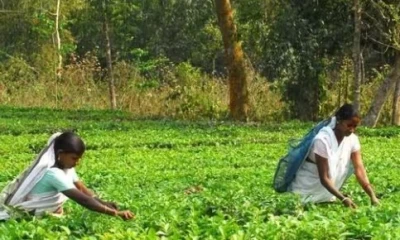Assam, renowned as Bharat’s tea heartland, is bracing for a severe blow to its tea production, with forecasts projecting a potential 50 per cent decline this year due to adverse climatic conditions. The repercussions of this downturn could be catastrophic for an industry that serves as the largest employer in the State.
Recent data released by the Tea Board of India paints a grim picture, indicating a sharp decline of approximately 40 per cent in tea production in Assam and around 23 per cent in neighbouring West Bengal up to March 2024 compared to the same period last year.
The region’s tea bushes have suffered significant wilting due to insufficient rainfall and soaring temperatures, signalling further crop losses in the months ahead.
Alarmingly, the India Meteorological Department reports a substantial rainfall deficit ranging from 2 per cent to 76 per cent across major tea-growing districts in Assam and West Bengal from March 1 to May 13 compared to normal levels for this time of year.
The timing of this decline couldn’t be worse, as the crucial first-flush and second-flush tea seasons are affected, putting immense strain on the financial stability of tea companies as well as struggling Small Tea Growers (STG).
Despite the anticipated drop in production, there has been no corresponding increase in tea prices, presenting a challenging economic landscape for tea producers.
However, amidst this crisis, there’s a glimmer of hope in regulatory efforts. The Tea Association of India welcomes proactive measures by the Food Safety and Standards Authority of India or FSSAI to regulate banned chemicals in tea production, aiming for a standardised and compliant market environment. Collaborative efforts between the Tea Board and FSSAI are expected to ensure the availability of compliant teas in the market, albeit with potential production losses.
In response to these challenges, the Tea Association of India has issued advisories to its members, asserting on compliance with regulatory standards despite potential reductions in production.
With concerted efforts from all stakeholders, including regulatory bodies and industry players, there’s optimism for navigating through this crisis and sustaining the vitality of Bharat’s iconic tea industry.

















